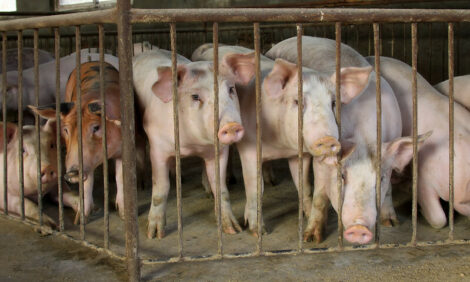



Hog Outlook: How Quickly will Producers React to Red Ink?
US Weekly Hog Outlook, 6th October 2007 - Weekly review of the US hog industry, written by Glenn Grimes and Ron Plain.The September 1 Hogs and Pigs report came in above the average of the trade estimates. The total herd and market herd came in close to our forecast, but the breeding herd was larger than our breeding herd estimate. However, the differences between our breeding herd estimate and USDA's estimate is only 0.6 percent and neither set of data is accurate within this range. The USDA inventory showed the total herd up 2.8 percent, the breeding herd up 1.1 percent and the market herd up 2.9 percent from September of 2006.
Fourth quarter slaughter is expected to be a record high, near 29.2 million head commercial slaughter. Indicated in this slaughter is October with the potential for over 10 million head. If this occurs, which is highly likely, it will be the first month of record with over 10 million head slaughtered. With this level of slaughter and a stable demand, we expect 51-52 percent lean hogs live to average in the upper 30s to low 40s.
USDA showed the inventory of hogs weighing less than 60 pounds was up 2.9 percent on September 1. However, they also said the June-August pig crop was up 3.5 percent from a year ago. During June-August, feeder pig imports from Canada were up 72,000 head from a year earlier, implying the supply of under-60-pound pigs should have been up 3.8 percent.
We are leaning toward the pig crop estimate being the most accurate prediction of January-March slaughter. This would give a slaughter for this quarter up 3.6 percent and a price for 51-52 percent lean hogs live in the upper 30s to low 40s.
Current data suggests the average cost producer will likely see substantial red ink in the next six months following one of the longest periods of profit of record.
The futures market responded on Monday to the report with most of the contracts down from $0.60 to 2.70 per cwt. However, on Tuesday most of the contracts hit the hardest on Monday recovered from $0.50-0.77 per cwt.
One of the big questions about the current hog industry is how quick producers will react to red ink by reducing production. With the current structure of the hog industry, the response may be slow. If so and we do not get substantial demand growth in the next 2-3 years, red ink may flow for some time.
Hog prices continued under pressure this week with continued large slaughter. The top live prices Friday morning were steady to $2 per cwt lower than a week earlier. Weighted average negotiated carcass prices on Friday morning were 1.83 per cwt lower to $1.42 higher than seven days earlier.
The top live prices for select markets on Friday were: Peoria $35.50 per cwt, St. Paul $38 per cwt and interior Missouri $38.75 per cwt. The weighted average negotiated carcass prices Friday morning by area were: western Cornbelt $55.90 per cwt, eastern Cornbelt $52.14 per cwt, Iowa-Minnesota $55.71 per cwt and nation $53.02 per cwt.
Pork product cutout per cwt of carcass was down $0.50 per cwt at $60.70 Thursday afternoon compared to a week earlier. The price of loins at $72.82 per cwt were down $5.33 per cwt from seven days earlier, Boston butts were down $2.42 per cwt at $58.77 per cwt, hams at $49.59 per cwt were up $2.80 per cwt, and bellies were up $0.81 per cwt at $73.99 per cwt from a week earlier.
Slaughter this week under Federal Inspection was estimated at 2,321 thousand head, up 8.0 percent from the same date in 2006 and an all-time record high for a week.
Weights of live barrows and gilts continue to grow. For last week, barrows and gilts in Iowa-Minnesota averaged 267.3 pounds per head up 0.8 pounds from a week earlier and up 1.5 pound from a year earlier.






